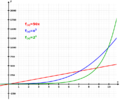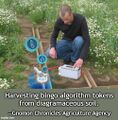Template:Selected anniversaries/January 28: Difference between revisions
No edit summary |
No edit summary |
||
| Line 1: | Line 1: | ||
<gallery mode="traditional"> | <gallery mode="traditional"> | ||
File:Ludolf van Ceulen.jpg|link=Ludolph van Ceulen (nonfiction)|1540: Mathematician and fencer [[Ludolph van Ceulen (nonfiction)|Ludolph van Ceulen]] born. He will spend a major part of his life calculating the numerical value of the mathematical constant π. | |||
File:Scrimshaw binge residue.jpg|link=Scrimshaw abuse|1921: [[Scrimshaw abuse]] correlates with rise in [[crimes against mathematical constants]]. | File:Scrimshaw binge residue.jpg|link=Scrimshaw abuse|1921: [[Scrimshaw abuse]] correlates with rise in [[crimes against mathematical constants]]. | ||
File:Exponential-growth-diagram.svg|link=Crimes against mathematical constants|1925: New type of [[Crimes against mathematical constants|math crime]] exploits victims of [[Scrimshaw abuse]]. | File:Exponential-growth-diagram.svg|link=Crimes against mathematical constants|1925: New type of [[Crimes against mathematical constants|math crime]] exploits victims of [[Scrimshaw abuse]]. | ||
Revision as of 20:40, 29 December 2016
1540: Mathematician and fencer Ludolph van Ceulen born. He will spend a major part of his life calculating the numerical value of the mathematical constant π.
1921: Scrimshaw abuse correlates with rise in crimes against mathematical constants.
1925: New type of math crime exploits victims of Scrimshaw abuse.
1927: Hilbert curve gives lecture on crimes against mathematical constants.
1911: Physicist Emil Julius Klaus Fuchs dies. He was convicted of supplying information from the Manhattan Project to the Soviet Union during and shortly after the Second World War.
2002: Tokens harvested from Diagramaceous soil used to cure capacitor plague for the first time.
2003: George Plimpton publishes first in prize-winning series of articles on capacitor plague.
2009: New study links Evil bit release capacitor plague.







